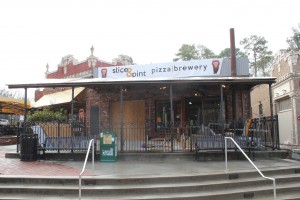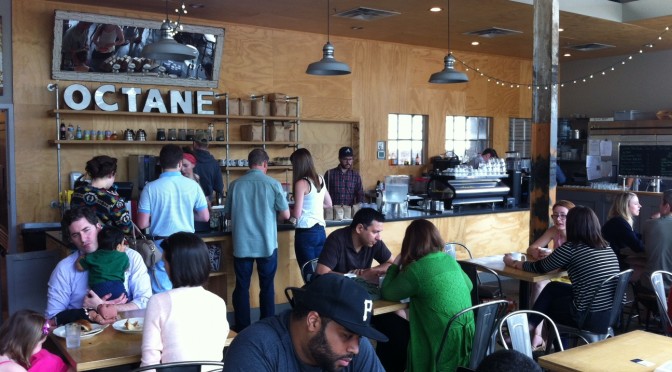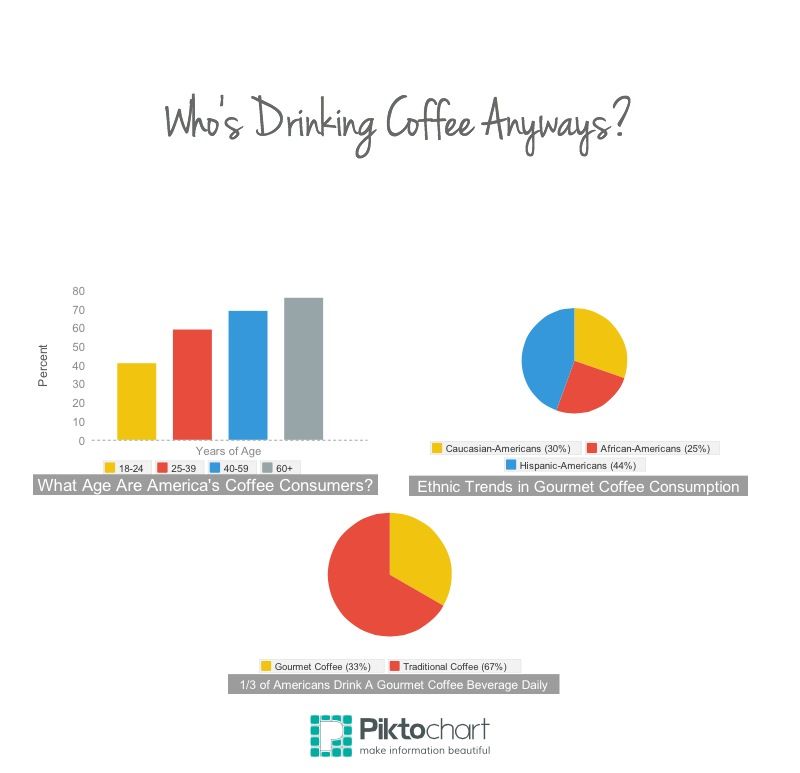Category Archives: Thirsty?
Old Westside Plow Factory: King of the Atlanta Dubstep Scene

A century ago, farming equipment was constructed in the King Plow factory off of West Marietta Street. The factory was renovated and is now the King Plow Arts Center and hosts more than 65 different establishments. Terminal West is just one of the numerous tenants that inhabit the industrial complex today. Where steel and iron were once molded into plows, (nice) modern music resonates within the aged building whenever Terminal West hosts a show in its 7,000 square foot property.
Terminal West took advantage of the electronic dance music craze in 2012, earning the title of Best New Venue from Creative Loafing. Referred to as “the house that dub step built” by Creative Loafing, the venue now hosts anything from its original electronic beats to other tunes like rock and R&B. However, Terminal West stays true to its electronic roots with an advanced light system that complements any DJs that may step onto the stage.
Terminal West gives viewers not only a musical experience but a visual experience, too. Using the combinations of sight and sound, Terminal West boasts on its website that visitors will have “unforgettable nights of music.” Furthering its appeal, the venue added a feature in 2013, adding a third sense to its arsenal, the sense of taste.
The extension of Terminal West is a restaurant called Stationside because of its direct proximity to railroad tracks across the street. Stationside serves lunch from 11 a.m.. to 2 p.m.. on Tuesdays through Fridays, and whenever Terminal West has a show at night. Stationside pulls together its array of sandwiches with local ingredients and also offers gluten-free and vegetarian options.
Contrasting the history surrounding it, Terminal West and Stationside both bring a modern vibe to a historic area. Depending on when you visit, the venue offers the unique opportunity to immerse yourself in a new world of music or to enjoy your lunch break while overlooking railroad tracks on the balcony.
Do you know Molly?
“How many people in this crowd have seen Molly?” Madonna asked the audience at Ultra Music Festival in Miami in 2012 when she was introducing the popular DJ Aviccii.
She said she was referencing the song “Have You Seen Molly?” by Cedric Gervais. But most people in the crowd assumed she was referencing the drug Molly, which has become prevalent at music festivals around the country.
College senior Sarah, who asked to use a pseudonym for purposes of this article, was first introduced to the drug two years ago at Day Glow, the world’s largest paint party featuring electronic dance music.
“People kept coming up to me asking ‘oh do you know Molly?’” Sarah says. “And I was like, ‘who is this girl? She sounds really popular.’”
She is really popular.
Sarah took her first MDMA pill at an electronic dance music concert one year later and didn’t feel much. The next weekend she took two pills. Five days later she lost feeling in her legs, had a panic attack and was taken to the hospital.
Sarah is just one of many college students experimenting with Molly.
The Drug Enforcement Agency classifies Molly as the powder or crystal form of MDMA, the chemical drug most commonly known as the main ingredient in Ecstasy. Defined by users as a “pure” form of MDMA, its fans consider Molly safe, unlike Ecstasy, which has a reputation of being laced with anything from fertilizer to methamphetamine. But, according to the DEA, Molly is a Schedule 1 controlled substance with high possibility for abuse and addiction and no accepted medical use.
Leonard Howell, a professor of psychiatry at Emory studying the pro-social effects of MDMA says that users should not equate “pure” with “safe.”
“Just because it’s pure doesn’t mean it’s safe. Pure MDMA has bad effects on its own right,” he says. The main problem is that MDMA causes core body temperatures to rise too high, and that holds true whether the drug is pure or not, he says.
Howell explains that the pro-social effects of the drug, such as the feelings of empathy and human warmth make MDMA more popular at parties than many drugs such as mushrooms or LSD.


The Drug Abuse Warning Network (DAWN) reports that the most MDMA users are between the ages of 18 and 20. DAWN also reported a 123 percent increase in MDMA-related hospital visits from 2004 to 2009.
Molly is prevalent at music festivals like Bonaroo and Electric Daisy Carnival, which are becoming more and more popular across the United States.
Although the drug first became popular among fans of electronic dance music about a decade ago, hip-hop artists have now recently adopted it as well. Molly has been referenced so many times in recent hip-hop songs that Complexmusic.com has started a “History of Rappers Referencing Molly in Songs” page. Most notably, Kanye West references it in his single “Mercy.”
Everyone seems to be talking about Molly these days, but nobody seems to be saying the same thing.
The one thing people do seem to agree on however is what it feels like when you’re “rolling.” “I didn’t care about anything but the music and the feeling of everything,” Sarah says. “I was all about the sensations. It was weird, but it was awesome.”
Another college senior, who requested anonymity, described it as “an incredible euphoric feeling that lasts for many hours.”
Molly comes in pill or powder form and can be gummed, inhaled, swallowed or parachuted—folded up into a tissue and swallowed. Users describe a bitter taste and often a tingly sensation in the mouth when the drug is ingested.
A typical dose is around .5 grams commonly taken in smaller doses over several hours according to users. When the euphoria begins to fade away users tend to take a bit more.
MDMA is a stimulant and that “awesome” euphoria is caused by a release of the neurotransmitters, norepinephrine, dopamine and serotonin, according to Howell.
Dr. Linda Grabbe, an assistant clinical psychiatric professor at Emory’s Nell Hodgson School of Nursing, says that the release of serotonin causes a release of the hormone oxytocin, commonly known as “the love hormone.” This is what causes the feelings of empathy and human warmth that make it so popular at parties, she says.
“What people say is it gives them a great sort of social connection with other people and released inhibitions,” she says.
The release of neurotransmitters, messengers of the brain cells, is followed by a subsequent depletion, often leaving users with feelings of depression that can be short or long term, Grabbe says.
Most formal institutions like The National Institute on Drug Abuse and the DEA do not distinguish between Molly and Ecstasy, making it impossible to know the exact number of users.
Law enforcement agencies have a similar issue distinguishing between the drugs, and because MDMA has no identifiable smell like alcohol or marijuana it is hard to detect once it is ingested. Neither the Emory Police Department nor Emory University Emergency Medical Services (EEMS) record any cases involving use of MDMA. Kevin Applegate, president of EEMS says they would diagnose someone on Molly with an “altered mental state,” the same description given to someone with alcohol poisoning or a concussion.
MDMA first hit the party scene in Ecstasy pills in the early 1990s, but rumors about its composition led users to Ecstasy’s more “pure” cousin Molly.
Sarah did not know the difference between Molly and Ecstasy when she first took the drug, but she and her friends looked up the symbol printed on their pills and found a website for a company claiming to have made the drug. She says she did not necessarily trust the website, but it made her feel better about trying Molly.
Both students purchased MDMA from a “friend of a friend.” Sarah bought pills for $10 each, but according to other users, Molly usually sells for around $7 to $10 per .1 grams—or around $30 a dose.
Howell says that if users are buying the drug illegally there is no way for them to know exactly what chemicals they are getting. He says that users who think the drug is pure MDMA are “just crazy.”
He says that most MDMA-related emergency room visits occur because of seizures, hyperthermia and dehydration. Because the drug is most often taken at parties or concerts, users often do not realize how tired and dehydrated they become after dancing and sweating continuously for hours he says.
Grabbe says many patients are hospitalized after combining MDMA with alcohol or other drugs. She says because MDMA affects temperature control in the body extreme cases result in hyperthermia, or overheating. Other side effects include electrolyte abnormalities, cardiac episodes and comas. She says many negative side effects occur when users combine drugs, or have a pre-existing condition that is aggravated by the MDMA.
Howell says there is a stigma against MDMA among scientists who study the drug because sustained use can lead to a neurotoxicity to serotonin, which means a long-term deficit of serotonin neurons in the brain. He says scientists have seen the effects of this deficit in sophisticated cognitive tests. The image below shows the depletion of serotonin in the brains of monkeys tested for the effects of MDMA.
He says it is difficult to convince young people about the long-term negative effects of MDMA use. “So they’re more living for the moment, and for the moment you know the drug appears to be safe,” he says.
Grabbe thinks that users are doing more research about drugs before they use them than in the past. “I think initially it was thought to be very safe, but now people are really understanding that there are health consequences so they’re beginning to get smarter about it,” she says.
She thinks peer education would be the most effective way to prevent use. “I’m an older nurse so me coming in and saying ‘you know, you really don’t want to go there,’ isn’t going to have a lot of impact necessarily,” she says.
Sarah might be just the peer to educate others. She is an example of MDMA use gone wrong.
In the hospital after losing feeling in her legs, she showed symptoms of hyponatremia, or sodium deficiency, which is common in MDMA users who drink too much water to avoid dehydration. While testing for hyponatremia, doctors discovered that she had an undiagnosed potassium deficiency, and after using MDMA she had almost no potassium left in her system. She spent the night in the hospital with an IV regaining control over the muscles in her legs.
Even though she knows her case is unique, she says it was enough to convince her never to do the drug again. “Its popularity has decreased with me,” she says.
She says she thinks what is most dangerous about Molly is its accessibility. “I definitely would think that it’s more dangerous because like when you’re at a party so many people have it and people tend to take more,” she says.
Sarah says Molly is not confined to electronic concerts anymore. Several friends of hers have taken the drug on a normal Saturday night out, she says.
Coffee is going gourmet

A good old-fashioned cup of joe is a part of many people’s daily morning routine, but according to a report by the National Coffee Association, demand for coffee is now going gourmet.
In 2013, consumption of traditional coffee decreased by 7% while consumption of gourmet coffee, like espresso or specialty pour over, increased. Although these numbers represent nationwide trends, they are backed up by increasing demand for local, speciality coffee shops here in Atlanta.
With the rise in consumption of gourmet coffee, the role of the coffee shop in society also seems to be changing. Rather than serving as a quick pit-stop for a caffeine fix, the coffee shop now is becoming a gathering place for conversation and intermingling. One might even argue it is the new social hotspot.
Local coffee shops in Atlanta are not hard to find, they exist in almost every neighborhood these days. With that in mind, the shops discussed in this piece are merely a sampling of the ever-growing coffee shop culture. But, if you are looking for a good cup of gourmet pour-over coffee, a latte with perfect foam, or just a barista who knows so much about coffee that it verges on intimidating, they are a good place to start.
In Decatur, the Dancing Goats Coffee Bar draws a unique mix of academics from Emory and Agnes Scott, families who live in the area, yogis from the studio next-door, and professionals utilizing the free internet connection. With its airy interior and friendly baristas, Dancing Goats is arguably the most simple of the coffee shops on this list. Its beverages are mostly ones that everyone recognizes, and while the baristas undoubtedly know a lot about coffee, they do not seem to possess any sense of superiority from that knowledge.
Since its opening in 2007, the shop has continued to grow, opening another location across town in 2012. It attracts a nearly constant stream of customers, who come mostly for its espresso beverages (although the locally-made doughnuts it serves have their own following). And, the baristas at the shop recognize that they have filled a sort of niche.
Across town at Octane Coffee in Grant Park, pour over seems to be the main attraction for the young, hip crowd that can be found chatting around the tables in its large warehouse-like space. With the Little Tart Bakeshop’s headquarters also in the shop, customers can get both coffee and a meal like a granola and yogurt bowl or a warm quiche. This seems to make the shop even more of a gathering place, a function that continues at night, when it becomes a cocktail bar.
Similarly, Condesa Coffee in the Old Fourth Ward attracts a young crowd, though it seems that many come to the shop to work rather than to socialize. There are often meetings around the bigger tables while the bars by the windows are filled with people on laptops. The food served is made with all local ingredients like Atlanta Fresh Yogurt and, like Octane, the bar serves cocktails instead of coffee at night.
For a different coffee shop experience in Atlanta, the Chattahoochee Coffee Company is located right alongside the Chattahoochee River about 20 minutes outside of downtown. Hidden away in an apartment complex, the shop has some small food items as well as French press coffee and espresso drinks—more specifically, strong espresso drinks. The environment is relaxed with some people working, but most socializing, oftentimes heading down to the Adirondack chairs that sit right by the river.
With all of these options for coffee shops in Atlanta, and more and more popping up all the time, it is easy to see that local coffee shops, at least in this city, really are flourishing. And, while each shop has a different feel, one attribute they share is their dedication to gourmet coffee.
Friday night at Church
It’s Friday in Atlanta, and you’re sick of dinner and a movie. Take a walk down Edgewood and you’ll see a sign for “Sister Louisa’s Church of the Living Room and Ping Pong Emporium.”
Known to savvy, ATL locals as “Church”, this bar is known for its quirky features like church organ karaoke.
-
“Church” was spontaneously founded in 2010 by a former divinity student named Grant Henry. (His alter ego is “Sister Louisa”, a fallen nun turned folk artist)
-
 CHURCH (It’s a Trucker Hat!) pic.twitter.com/xjfsIEBgDt
CHURCH (It’s a Trucker Hat!) pic.twitter.com/xjfsIEBgDt -
The New York Times describes Church as a place that, “..plays with, and spoofs, church culture. Karaoke is
performed in choir robes, and walls are decorated with faux-religious pop art.” -
 Jesus was a hippie
Jesus was a hippie
hanging out with the people at the Chapel Bar at CHURCH. pic.twitter.com/ifgdmwMywi -
His bar became so successful, it’s open on almost every holiday. So if you have been searching for a hiding place during Christmas/Thanksgiving/50th birthday parties, now you know about Church.
-
I mean, if it’s good enough for Jessica Alba, it should be good enough for you.
-
 JAH:
JAH:
Jessica Alba Henry at CHURCH pic.twitter.com/iiBypzLpch -
Artwork, religion, and booze, y’all.
No,this is not the service entry way. -
Have a hankering for harmonicas?
-
How about doing a little this?
-
And listening to this? …….It will sound a little better after you’ve had a few
-
Don’t let the title fool you. There is next to nothing holy about this place
-
Earliest I’ve ever been to church on a Sunday #brodown @ Sister Louisa’s Church of the Living Room and… http://instagram.com/p/jV00tgKLLz/
-
Not your cup of tea? Well, have a nice day, they aren’t changing for anyone.
-
So if you find Sunday services lackluster, try Jesus with a side of whiskey!
![]()
5 things to do in Virginia-Highland
No panic at The Tabernacle: historic venue down but not out
The Tabernacle is making Atlanta news headlines after the concert hall’s floor collapsed during a sold-out January concert. An Atlanta fire marshal evacuated the hall, ushering out hundreds of Panic at the Disco! fans. To the disappointment of concertgoers and scheduled artists, the venue remains temporarily closed until further inspection. However, this historic grande dame has gone through many ups and down and has always come back to enrich downtown Atlanta. The fracture of the century-old flooring serves as a reminder of the venue’s rich history.
The Luckie Street concert hall has not always blasted rap, rock and techno beats. The elaborate four-story building once echoed church bells and songs of faith. Reverend Leonard Gaston Broughton first opened the downtown building in 1910 as a Baptist church, the Broughton Tabernacle. Broughton added an infirmary and nursing school dormitory adjacent to the church. The tabernacle grew, eventually serving 4,000 worshipers, but by the mid-1980s the church membership dwindled and the congregation relocated. During the1996 summer Olympics in Atlanta, the space was reincarnated as the House of Blues. When the House of Blues’ lease expired two years later, the building was rechristened as The Tabernacle, but this time home to a different kind of soul.
The pulpit is now a stage and The Tabernacle, as is known today, has hosted performances by Adele, Bob Dylan, Elton John, Prince and Nelly. While big enough to host top performers, its intimate atmosphere has not been lost – and neither has its elegance. Adorned with a crystal chandelier, stained glass windows, an ornate ceiling and tiled balconies, the venue merges the traditional with the hip.
And if the outstanding ambiance, acoustics, lighting and lineup aren’t enough, food and drinks are available at the multiple bars throughout the building.
The Tabernacle sits at the edge of downtown Atlanta near Centennial Park and is a regular stop for music-lovers. Now run by Live Nation Entertainment Inc., the world’s largest live music company, the historic concert hall is one of Atlanta’s and the nation’s top music venues. A crack in the floor might put the music on pause, but concerts have already been rescheduled and with a prayer, The Tabernacle will soon reopen for another chorus.
152 Luckie Street
Atlanta, GA 30303
Tel: 404.659.9022
Fax: 404.659.9086
Where to find the best coffee in Grant Park/Cabbagetown
Decatur: metro Atlanta’s beer neighborhood
Five local breweries that will make a college student put down Natty Light
Twenty years ago Decatur looked very different. While the little city just outside the Atlanta limits had plenty of small-town charm, it lacked nightlife. Then Brick Store Pub opened in the square, beer laws became looser, and Decatur became a beer-loving neighborhood.

“It was fun to see the transition of Decatur,” said Crawford Moran, the owner of new Emory spot, Slice and Pint and a brewing veteran. Decatur is the neighborhood for brewing beer. With five commercial breweries and a host of pubs that serve fine craft beer, there is no excuse for drinking crappy beer in a fraternity basement.
Moran’s pizzeria in Emory Village will soon be brewing its own beer. The restaurant is currently getting its brewing license, but it can’t until it finishes construction on the brewing equipment later this year.
Next to the restaurant is a room full of fermentation tanks. According to a bartender, “There is a tunnel under the floor, and pipes will go from the tanks to tap. It doesn’t get any better than that” In those tanks will be a rotation of beers, from light to dark and everything in the middle.
“We want to try a lot of new things,” Moran said.
Slice and Pint’s bar offers a few local libations. One Decatur beer they offer is Single Intent by Three Taverns Brewing (I can verify that this beer is delicious). The beer won “Best Overall Beer” at Hotoberfest in 2013. Three Taverns offers four other beers including Feest Noel, a special Christmas brew.
Twain’s Billiards and Tap, located in downtown Decatur, is more than a brewbub, a bar that also brews its own beer. It’s a hang-out spot. While sipping one of its nine beers, you can play darts, shuffleboard, or billiards. And if you’re searching for the perfect date spot, Twain’s offers live jazz on Tuesday nights.
Blue Tarp Brewing Co began brewing beer in December 2012 as Decatur’s first full scale brewery. The brewery has five different beers, including the high gravity Last Place Stout. You can find their beers in local pubs or any of the growler filler stations.
Wild Heaven Craft Beers was being brewed in South Carolina but they are moving just outside downtown Decatur, the brewery is looking to open in April.
Moran realized he loved good beer when he traveled to Europe and realized beer there was far superior. Now, instead of taking a plane, students can hop on Emory’s free CCMT shuttle to Decatur or walk to Emory Village, and get a taste of the types of ales once exclusive to faraway lands.
To those who still drink crappy lagers, Moran says, “Life is too short.”
Looking to try these beers and hang out in Decatur, check out the annual Decatur Craft Beer Festival in October 2014.
Slice and Pint 1593 North Decatur Rd. Atlanta, Ga 30307 404-883-3406
- Bryan Cronan
A Friday night bar crawl in Virginia-Highland
View the story “So It’s Friday Night in Atlanta…” on Storify
So, it’s Friday night in Atlanta.









